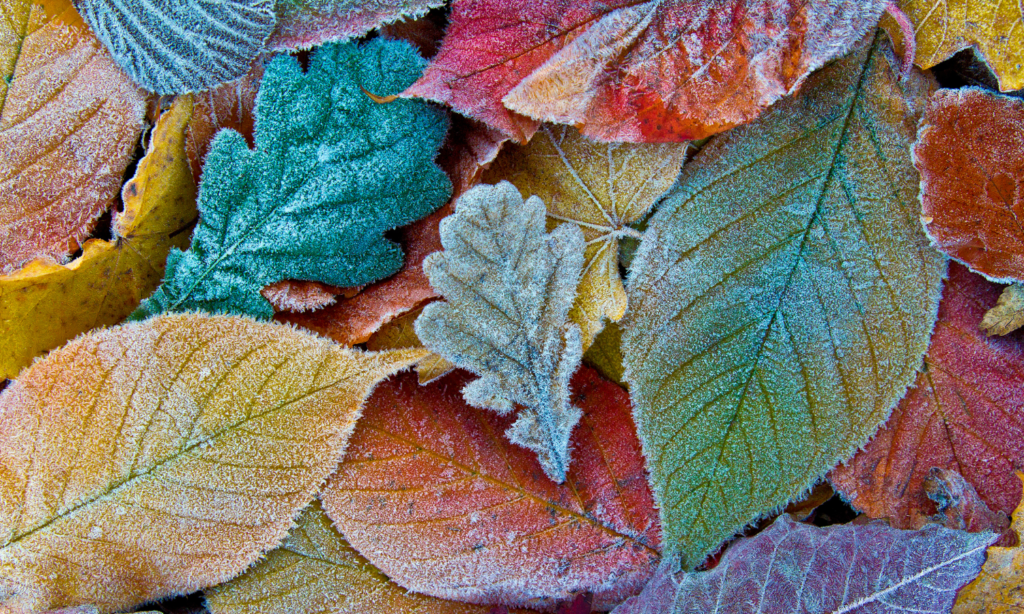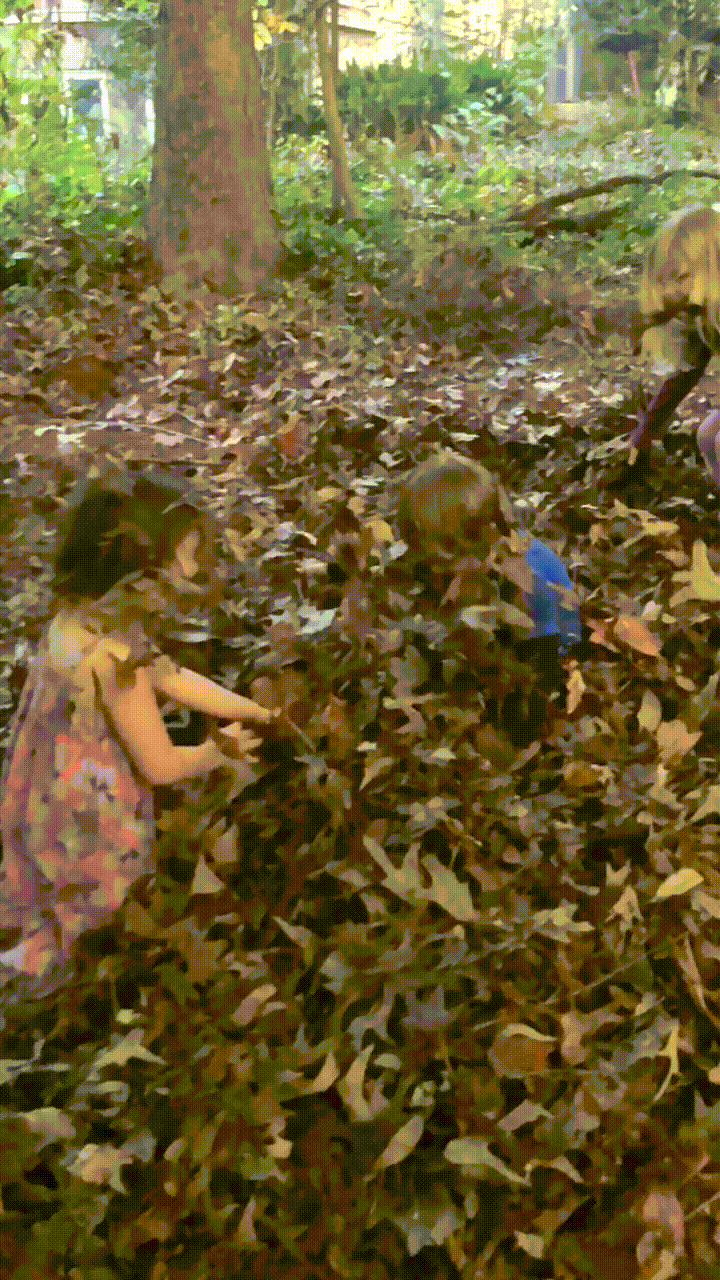Aside from all the pumpkin, tending fires in the hearth, and gathering with family (in typical years, at least…), autumn also provides an abundance of nutrients and organic matter for our gardens: all the leaves!

Have you ever wondered why forests thrive without someone going in and applying lots of fertilizer to help the trees grow? They drop tons of organic matter in the form of leaves at their roots each fall, and that, in turn, becomes soil full of microbes, beneficial bacteria, and more. We can apply that same principle to how we manage our own leaves⏤use them where they will build soil and, subsequently, the health of your plants. You can strategically use your yard’s shedding of leaves to build your entire landscape’s health overtime!
HERE’S HOW:
You can rake leaves and use them as a winter mulch layer in any planting beds in lieu of mulching in the spring. This will add free organic matter to your plantings, increasing water storage during the dry months, and protect roots from frost.
If you’re concerned about the volume of leaves and the strong winds undoing your mulching and raking, you can gather the leaves in a separate composting area to let them decay a bit before transferring them to your planting beds.
We often bag them in reusable yard bags at my home and use them to cover our compost pile whenever we add food scraps. If you want to know more about composting in a residential setting, check out this blog post about the pros and cons of various composting methods.
OTHER BENEFITS:
And, using your leaves in your yard rather than hauling them away is easier on your pocketbook, saving you from having to buy fertilizer or compost in the spring.
Also, what’s better than jumping into a pile of leaves, anyway?

If you want to know more about building resilience in your yard, I have a FREE masterclass⏤The 3 Pillars of a Regenerative Landscape⏤coming up soon. You can register here if you’d like to join to learn simple solutions we can easily implement in our yards to make a positive impact including techniques for working with water (you only need a shovel!), how to build soil without the need for fertilizers or costly inputs, and how to choose plants that work together to support the ecology of your land (and feed you, too!).